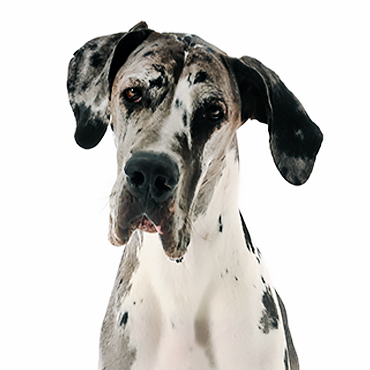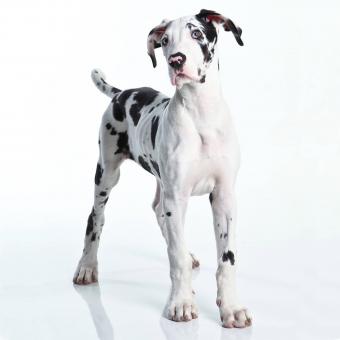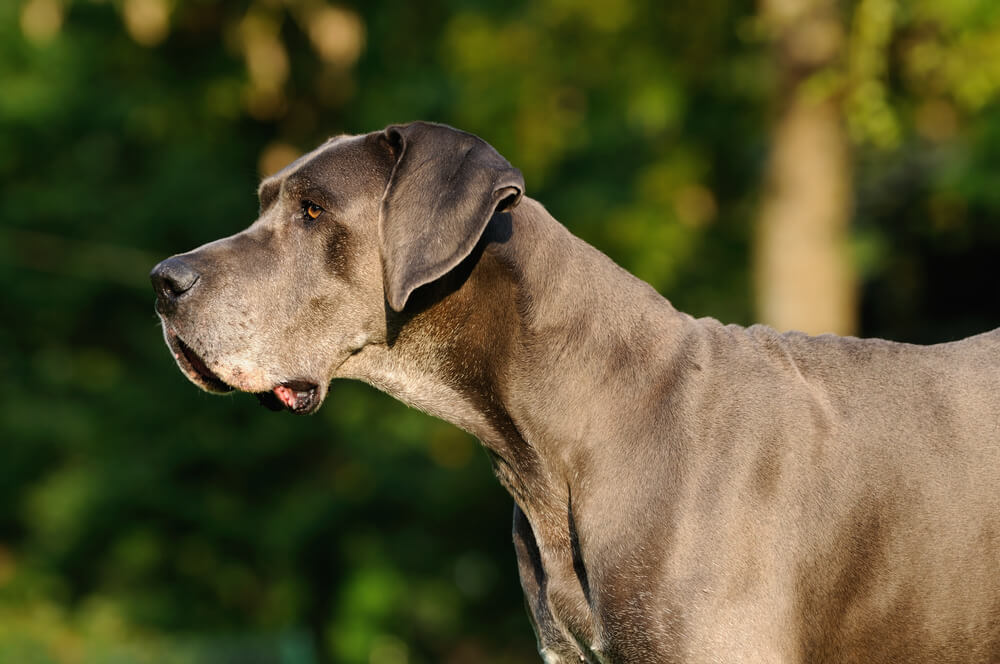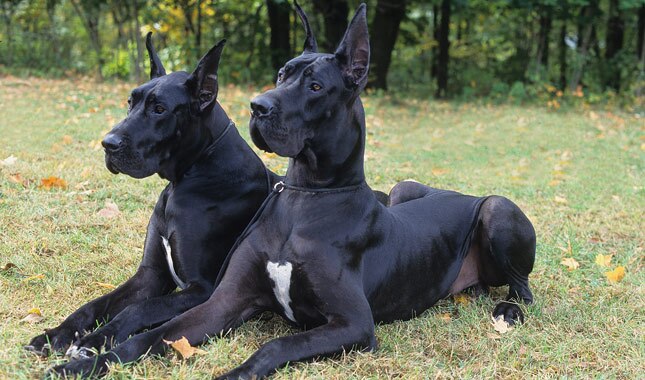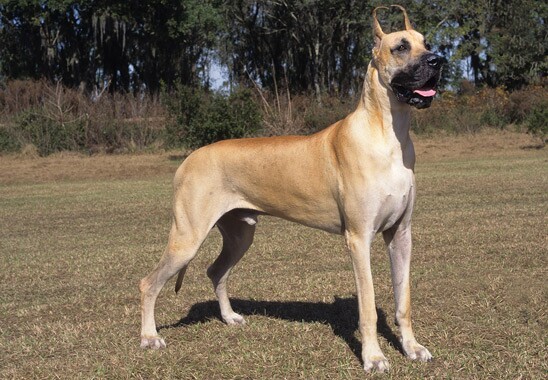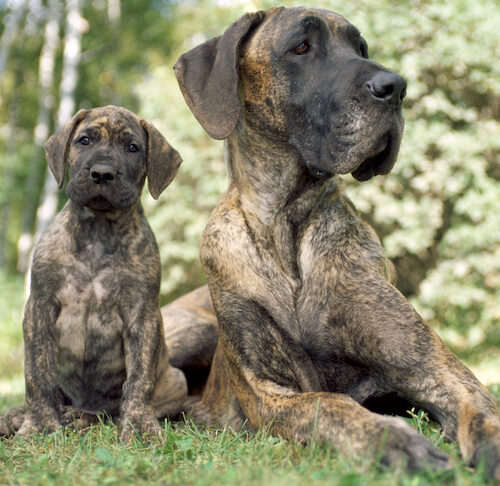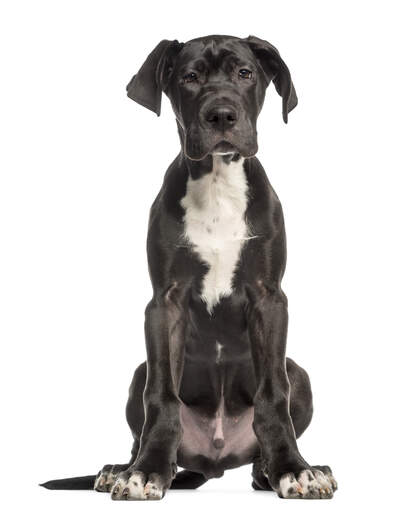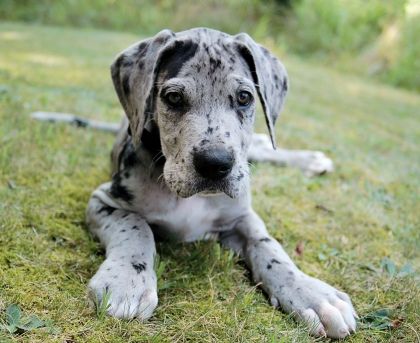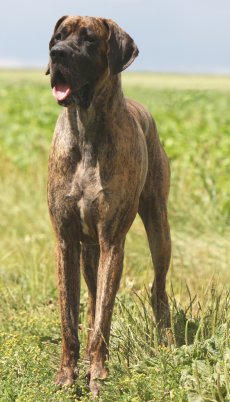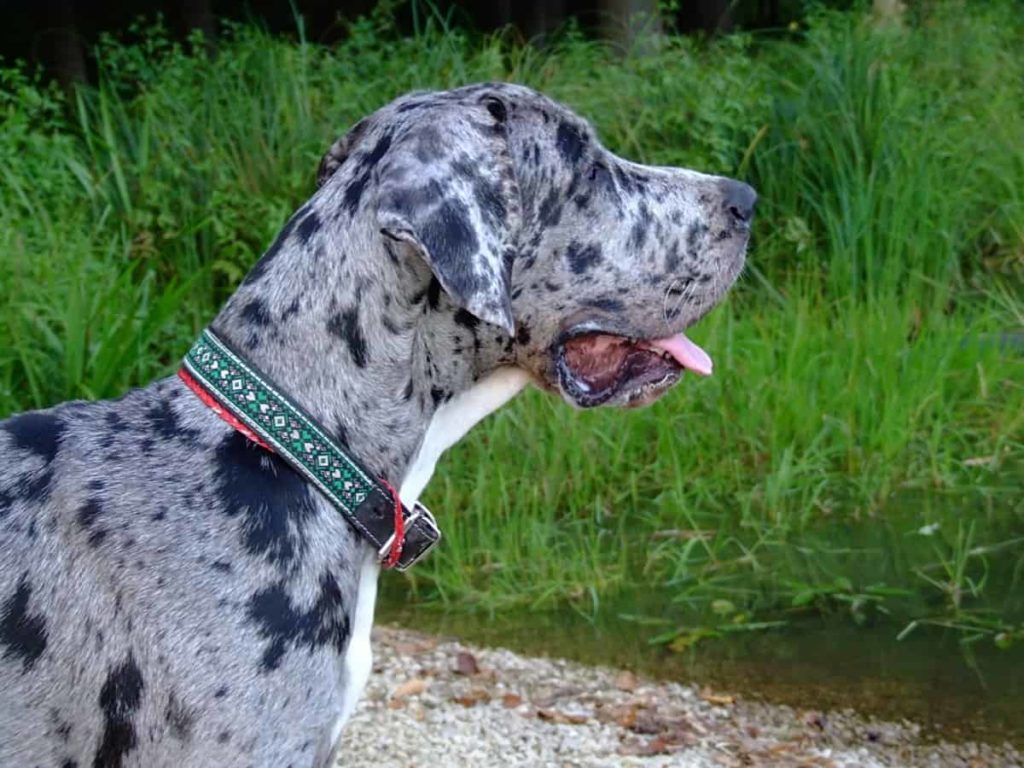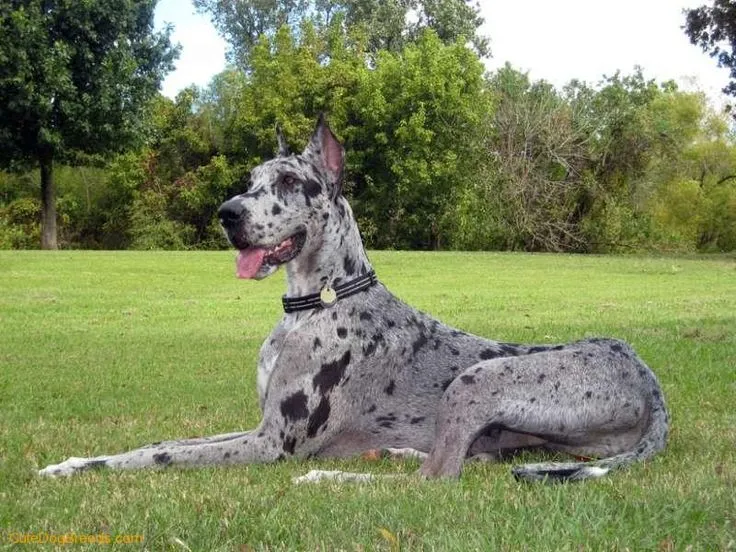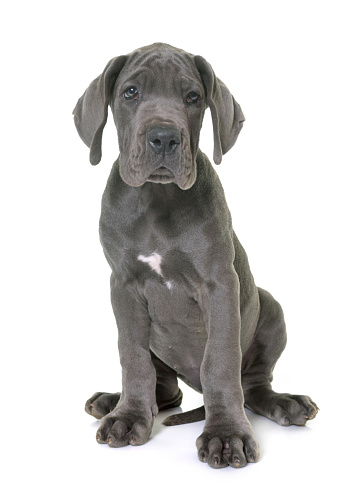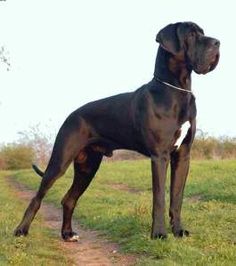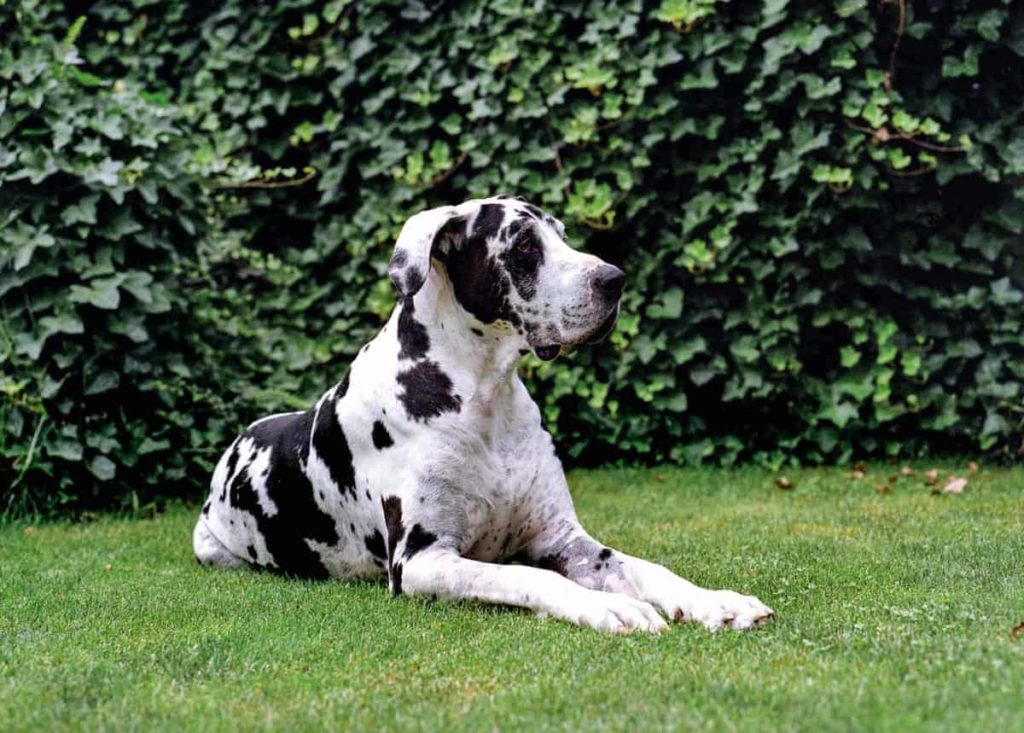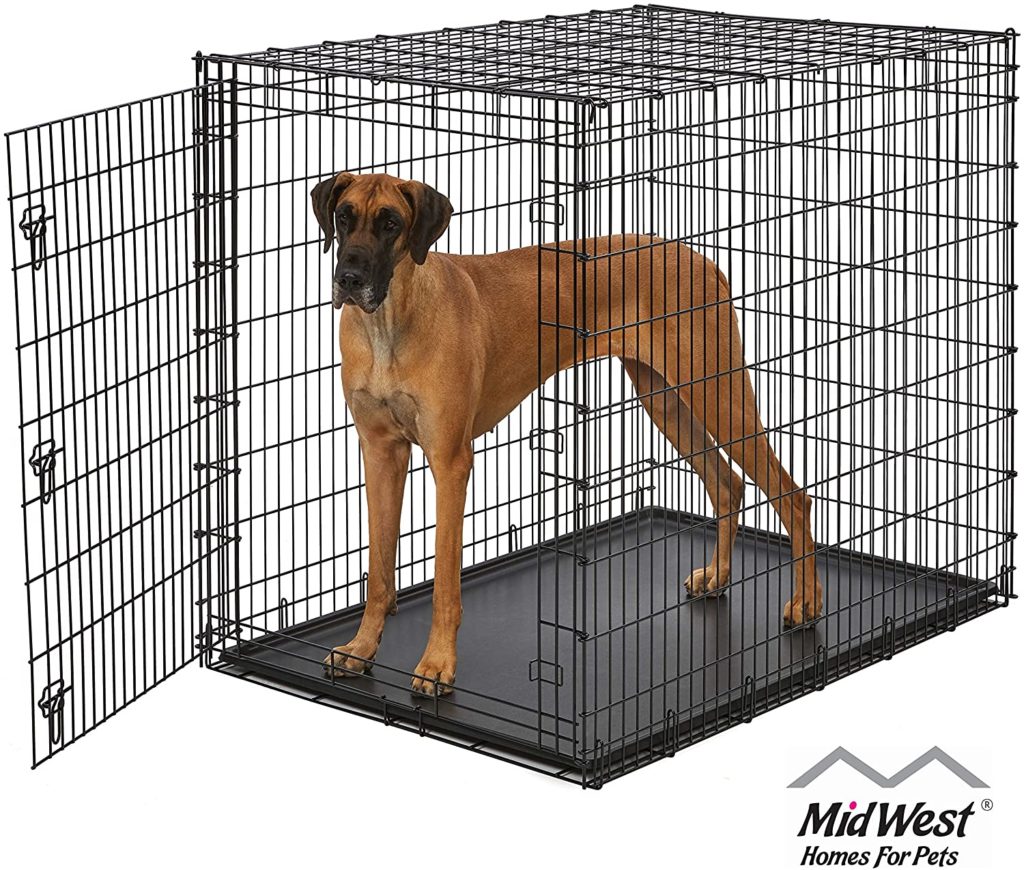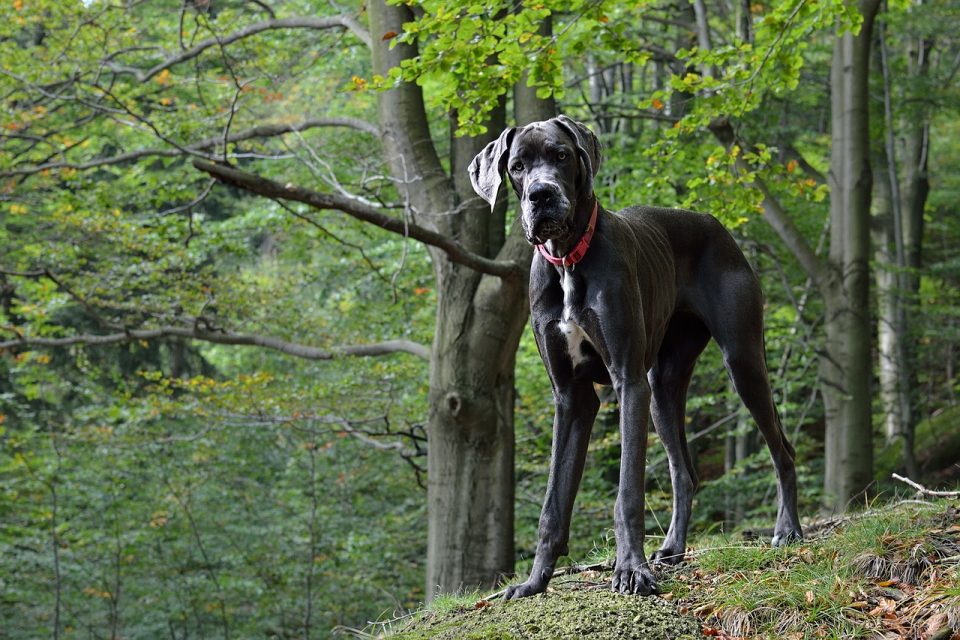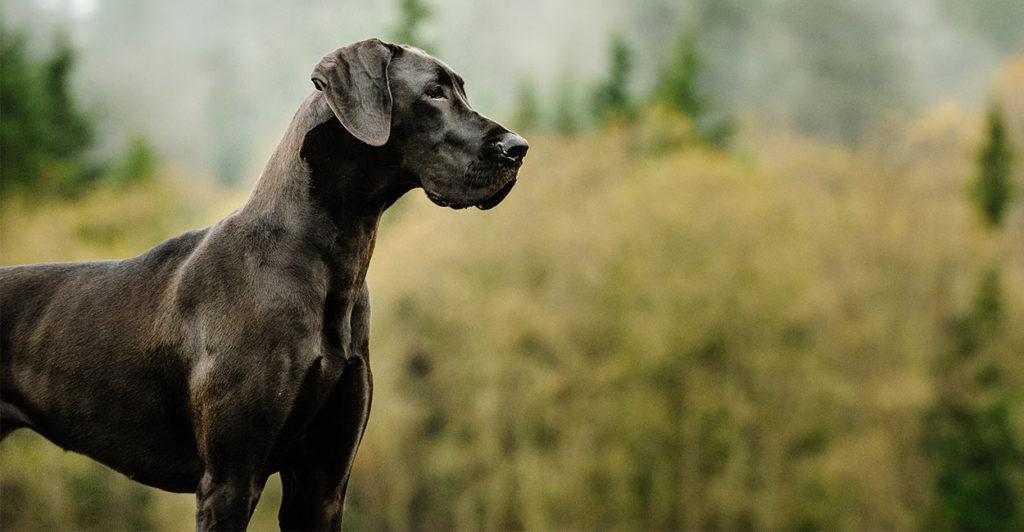The Great Dane personality is unlike any other dog! From a young age, a Great Dane puppy has dog breed characteristics that none other demonstrate!
Do you have a Great Dane? If so, you know that they are one of the most unique dog breeds out there. They are known for their giant size and sweet personalities. But what else do you need to know about them?
GREAT DANE PERSONALITY: WHAT DO GREAT DANE OWNERS NEED TO KNOW?
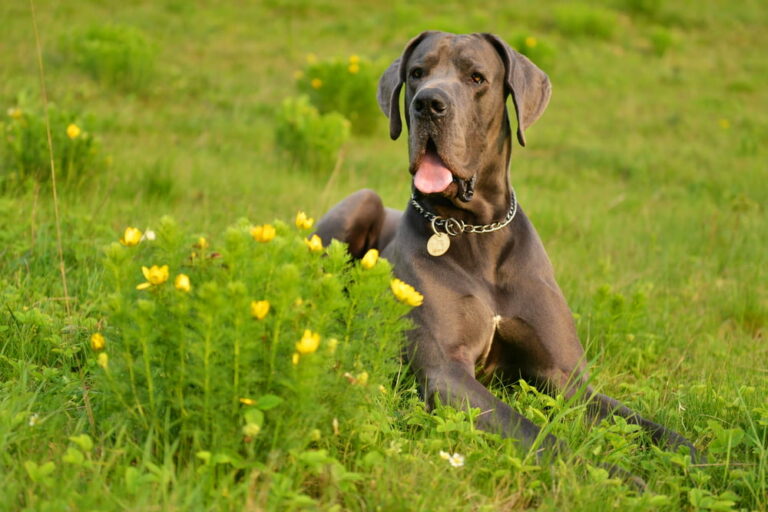
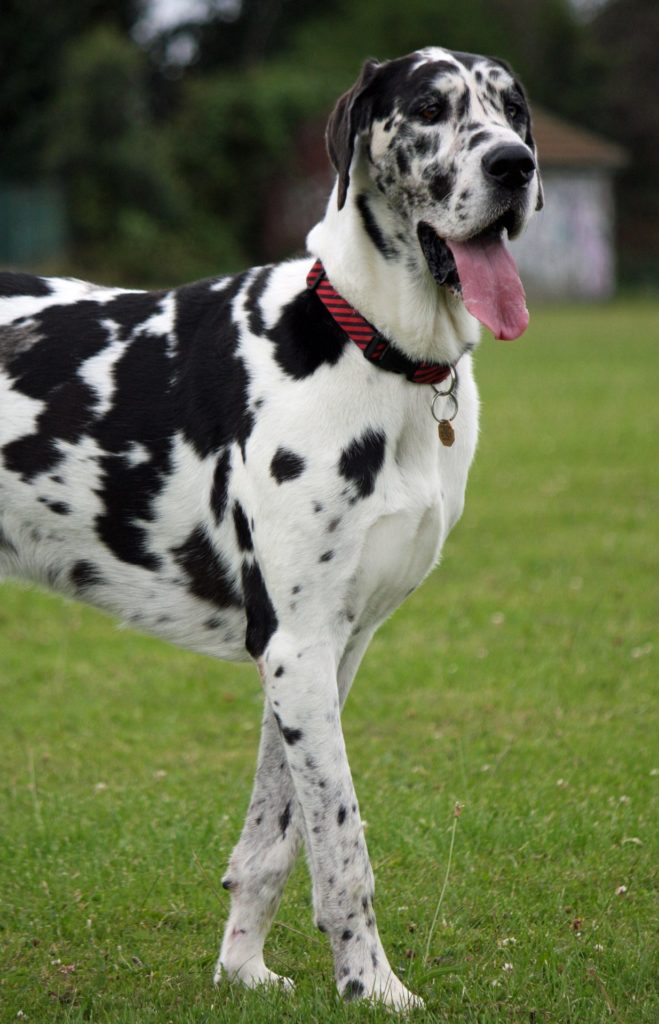
Giant breed dogs are often known for being “gentle giants.” But the Great Dane takes this to a whole new level! They are not only gentle, but also incredibly sweet, loving, and loyal. If you are thinking about getting a Great Dane, or already have one, here are ten things you need to know about their personality:
- Great Dane temperament
- Great Dane life span
- Great Dane health problems
- Are Great Danes good with young kids?
- Getting large dogs from reputable breeders
- Where were Great Dane dogs originally bred and what were they bred for?
- Are Great Danes active?
- What items are necessary for large and giant breeds?
- Do Great Danes require a lot of management, training, and work?
GREAT DANE TEMPERAMENT
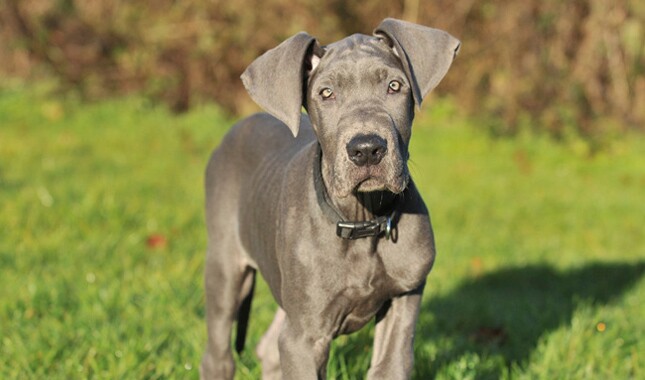
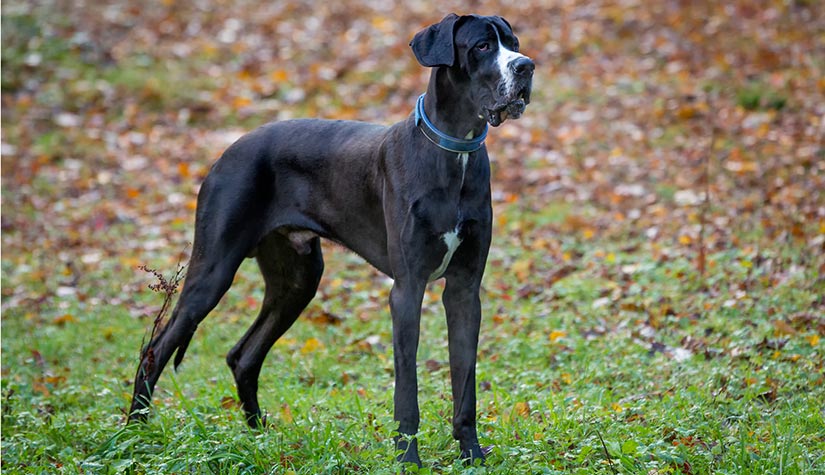
The Great Dane is a large and majestic breed of dog. Also known as the “gentle giant,” these dogs are calm, loving, and make great companion animals. Despite their large size, Great Danes are known for being gentle and good with children. In this blog post, we’ll explore everything you need to know about Great Dane temperament, from puppyhood to adulthood.
GREAT DANE PUPPY TEMPERAMENT
Great Dane puppies are notoriously cute and cuddly. They are also full of energy and mischief! It is important to begin training and socialization early with your Great Dane puppy, so that they grow up to be well-behaved adult dogs. Without proper training and socialization, your Great Dane puppy may become anxious or aggressive as they grow older.
ADULT DOG TEMPERAMENT
As adults, Great Danes are calm and gentle giants. They make great companion animals and are usually good with children. However, due to their large size, it is important to teach your children how to properly interact with your Great Dane. For example, they should not be allowed to jump on or pull the dog’s tail.
TRAINING AND SOCIALIZATION AS A GREAT DANE PUPPY
Getting a Great Dane is no different than other animals in that you must start your obedience training as soon as possible. Other dogs will grow much slower than your large breed puppy and adult Great Danes can be huge and overpowering. It is crucial to start your training before you have a 130+ lb adult Great Dane that you cannot control.
GREAT DANE RESCUE CAN IMPACT GREAT DANES TEMPERAMENT
Rescuing a Great Dane is always a positive and heartwarming story, but you should ask a lot of questions. Many giant dogs in rescue have endured trauma, been neglected, or worse. As a result, they may have issues with anxiety, aggression, or even PTSD. Be sure to do your research and ask the rescue organization lots of questions before you commit to adopting a Great Dane.
ARE GREAT DANES AGGRESSIVE?
Contrary to popular belief, Great Danes are not naturally aggressive dogs. With proper training and socialization, they can be mellow and loving companion animals. However, without proper care, they may become anxious or even aggressive as adults. If you think your Great Dane is showing signs of aggression, it is important to consult with a professional trainer or behaviorist for help.
ARE GREAT DANES GUARD DOGS?
Great Danes can make excellent guard dogs because of their large size and intimidating bark. However, in order for them to be effective guard dogs, they must be properly trained. Without proper training, a Great Dane may become scared or even aggressive when strangers come around.
ARE GREAT DANES EASY TO TRAIN?
The Great Dane is a large and majestic breed of dog that is known for having breed characteristics of being calm and gentle. With proper training and socialization from an early age, these dogs can make great companions for families with children. However, without proper care, they may become anxious or even aggressive as adults. If you think your Great Dane is showing signs of aggression, it is important to consult with a professional trainer or behaviorist for help.
GREAT DANE LIFESPAN
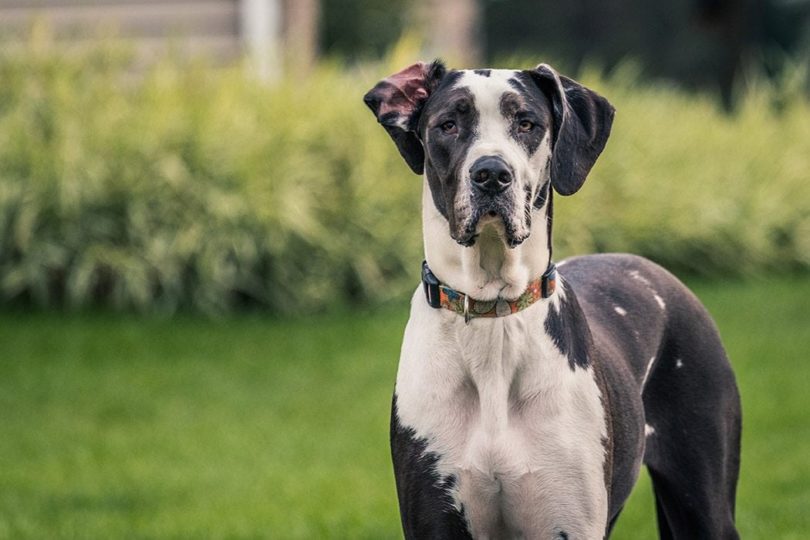
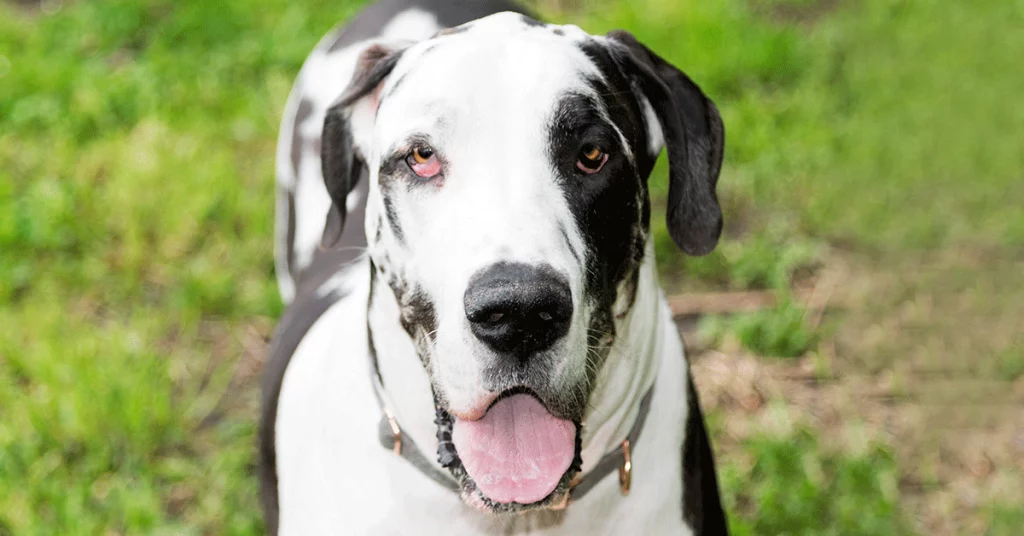
If you are thinking about getting a Great Dane, or already have one, you might be wondering how long these gentle giants typically live. Unfortunately, due to their large size, Great Danes don’t have the longest lifespan compared to other breeds, but with responsible breeding and care, they can definitely enjoy a good quality of life. In this blog post, we’ll discuss some of the factors that influence a Great Dane’s lifespan as well as some tips on how to help your furry friend live a long and healthy life.
RESPONSIBLE BREEDER AND LIFE SPAN
One of the main things that affects a Great Dane’s lifespan is responsible breeding. When breeders are not careful about health issues and genetic defects, it can shorten a dog’s lifespan quite dramatically. If you are thinking about getting a Great Dane, make sure to do your research on reputable breeders who can provide you with healthy puppies.
Once you’ve brought your puppy home, it’s important to take them to the vet for regular check-ups and vaccinations so that they can stay healthy and catch any problems early on.
BACKYARD BREEDING AND GREAT DANES LIFE SPAN
Another factor that can influence a Great Dane’s lifespan is backyard breeding. This is when people bred their dogs without taking into consideration health or temperament issues. As a result, these dogs often have shorter lifespans and more health problems. If you have a Great Dane that was backyard bred, it’s important to be extra vigilant about their health and take them for regular vet check-ups. Even though they might not live as long as responsibly bred Great Danes, you can still help them enjoy a good quality of life by providing them with proper care.
HEALTH PROBLEMS
Great Danes are also prone to certain health problems that can shorten their lifespan. Some of the most common health problems include hip dysplasia, heart disease, bloat, and cancer. While there is no guarantee that your dog will never experience any health problems, you can help them by feeding them a high-quality diet and making sure they get plenty of exercise. If you think your dog might be sick, it’s important to take them to the vet right away so that they can get the treatment they need.
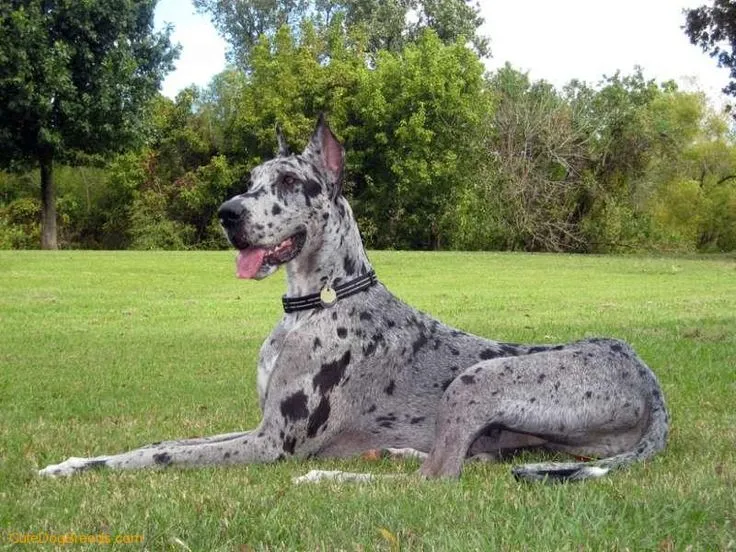
WHAT IS OFA HEALTH TESTING?What is OFA Health Testing?
YOUR DOG’S AGE DEPENDS ON THE LIFE YOU GIVE IT
Of course, the biggest factor in determining how long your Great Dane will live is the life you give them. If you provide them with plenty of love, proper nutrition, exercise, andvet care, they will enjoy a long and happy life. On the other hand, if you neglect their needs or abuse them, their lifespan will be shortened considerably. So if you want your furry friend to stick around for awhile, make sure to give them the best life possible!
There are many factors that go into determining your dog’s age and how long a Great Dane will live. From responsible breeding to adequate exercise and nutrition, there are many things YOU can do to help your furry friend enjoy a long and healthy life! The life span of a Great Dane can continue to grow as pet parents become more and more educated.
GREAT DANE HEALTH PROBLEMS
GREAT DANE HEALTH ISSUES
As a Great Dane owner, it’s important to be aware of the potential health problems that your dog may face. Great Danes are a giant breed, and as such, they are prone to some health issues that other dogs don’t have to worry about. Here are some of the most common health problems in Great Danes, and what you can do to help keep your dog healthy and happy.
HEALTH ISSUES IN FEMALE GREAT DANES
One of the most common health problems in female Great Danes is pyometra, which is an infection of the uterus. Pyometra can be life-threatening if not treated promptly. Signs of pyometra include increased thirst, urination, and appetite; vomiting; diarrhea; and weight loss. If you notice any of these signs in your dog, take her to the vet immediately. Treatment for pyometra typically involves surgery to remove the infected uterus.
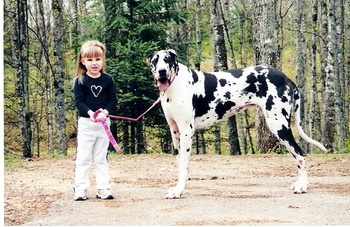
WHEN TO SPAY A FEMALE GREAT DANE9 Important Factors to Consider About When to Spay a Great Dane
Great Danes are also susceptible to mammary tumors, which are tumors that develop in the mammary glands. Mammary tumors are usually benign (non-cancerous), but they can sometimes be malignant (cancerous). The best way to prevent mammary tumors is to get your dog spayed before she reaches sexual maturity (usually around 6 months old). If your dog does develop a mammary tumor, it will need to be removed surgically.
HEALTH ISSUES IN MALE GREAT DANES
One of the most common health problems in male Great Danes is cardiomyopathy, which is a heart condition that can be both congenital (present at birth) or acquired (develops later in life). Cardiomyopathy can lead to heart failure and death if not treated promptly. Signs of cardiomyopathy include exercise intolerance, shortness of breath, fainting/collapsing, and an enlarged heart on x-ray. If you notice any of these signs in your dog, take him to the vet immediately for treatment.
Great Danes are also susceptible to testicular tumors, which are growths that develop on the testicles. Testicular tumors are usually benign (non-cancerous), but they can sometimes be malignant (cancerous). The best way to prevent testicular tumors is to have your dog neutered before he reaches sexual maturity (usually around 6 months old). If your dog does develop a testicular tumor, it will need to be removed surgically.
EYE AND CARDIAC DISEASES
A Great Dane can be prone to some eye and cardiac issues such as cardiomyopathy, eye problems like Progressive Retinal Atrophy (PRA) and Cherry Eye. It’s important to get regular checkups if you have a giant dog.
HIP DYSPLASIA AND ARTHRITIS
The Great Dane dog breed is more prone to joint disease than other dogs due to their size and impact / wear and tear they take on their joints.
Arthritis and Hip Dysplasia are amongst these issues that plague the Great Dane.
You can prevent your Great Dane from having to deal with these painful diseases by:
- Getting your Great Dane from a quality breeder
- Frequently trimming their nails
- Providing them with non-slip surfaces to walk on in your house
- Varying your outdoor walks to provide them with a variety of surfaces to strengthen their feet on
- Giving lots of healthy exercise options
- Providing them with an orthopedic bed
- Providing a high quality and breed balanced diet
- Giving joint supplements
GENETIC HEALTH PROBLEMS
Some problems in the Great Dane dog breed are genetic. If you are bringing a giant dog into your home, you should research the health problems that are specific to the breed, and talk to your veterinarian about what you can do to prevent or manage them. Then, make sure to invest time into finding a breeder that health tests their dogs to eliminate potential health issues from their lines.
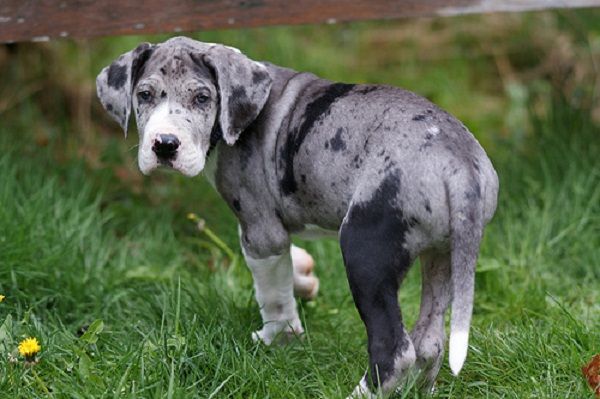
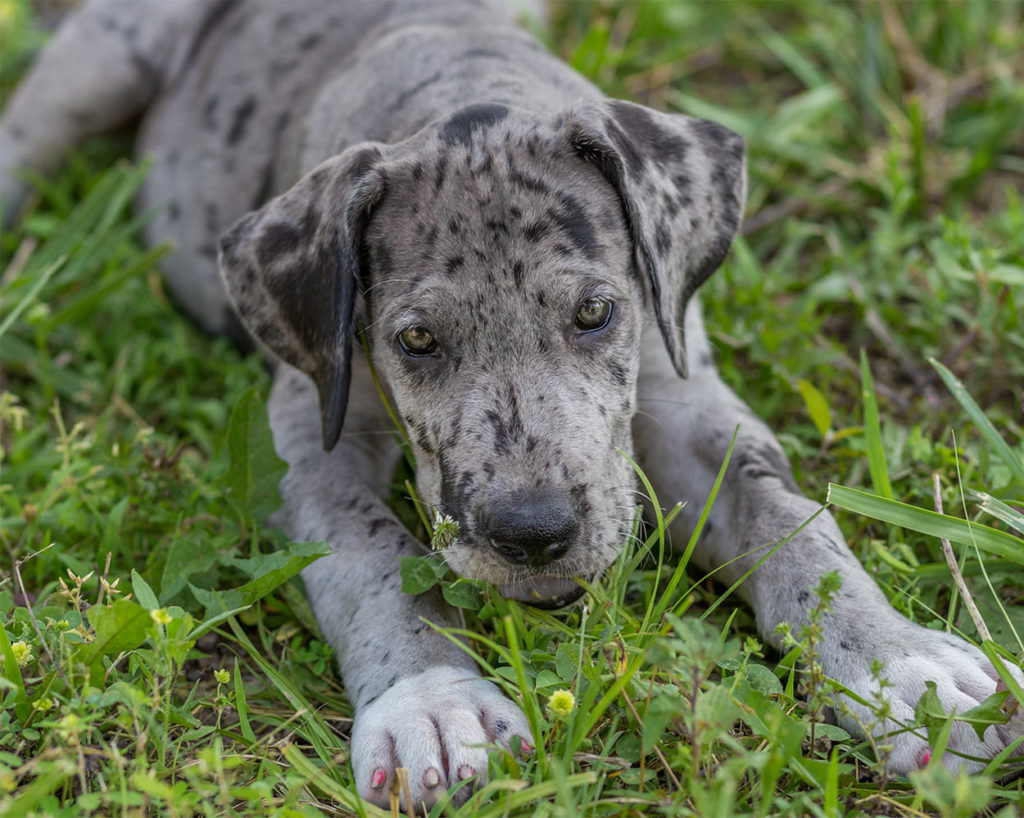
HELP TO CREATE A HEALTHIER DOG
As a Great Dane owner, it’s important to be aware of the potential health problems that your dog may face. Great Danes are a giant breed and as such they are prone to some health issues that other dogs don’t have t worry about However by being informed and knowing what signs t look out for you can help ensure that your Great Dane lives a long healthy life Despite their size Great Danes are gentle giants full love And with proper care they make wonderful lifelong companions
ARE GREAT DANES GOOD WITH YOUNG KIDS?
Lots of people are looking for a big dog to join their family. A dog that will protect them, be a best friend and provide lots of love. But when you have young kids, it’s important to find a breed that will also do well with little ones.
BASIC OBEDIENCE COMMANDS AND SOCIALIZATION
It’s important to socialize your Great Dane early on so that they are comfortable around different types of people and situations. This will help them to be more relaxed and less likely to startle easily as they grow older. If you have friends or family members with young children, invite them over often so that your pup can get used to being around groups of kids and learn how to behave appropriately.
CRATE TRAINING
Crate training is a fantastic way to help keep your dog safe from kids or other dogs, strangers, visitors, or chaos in your home. Even though your Great Dane may have a gentle nature, they may be overwhelmed when a guest visits, and a crate is the best place for them when they are feeling stressed. Some Great Danes prefer sleeping in their crate as they find it a safe place!
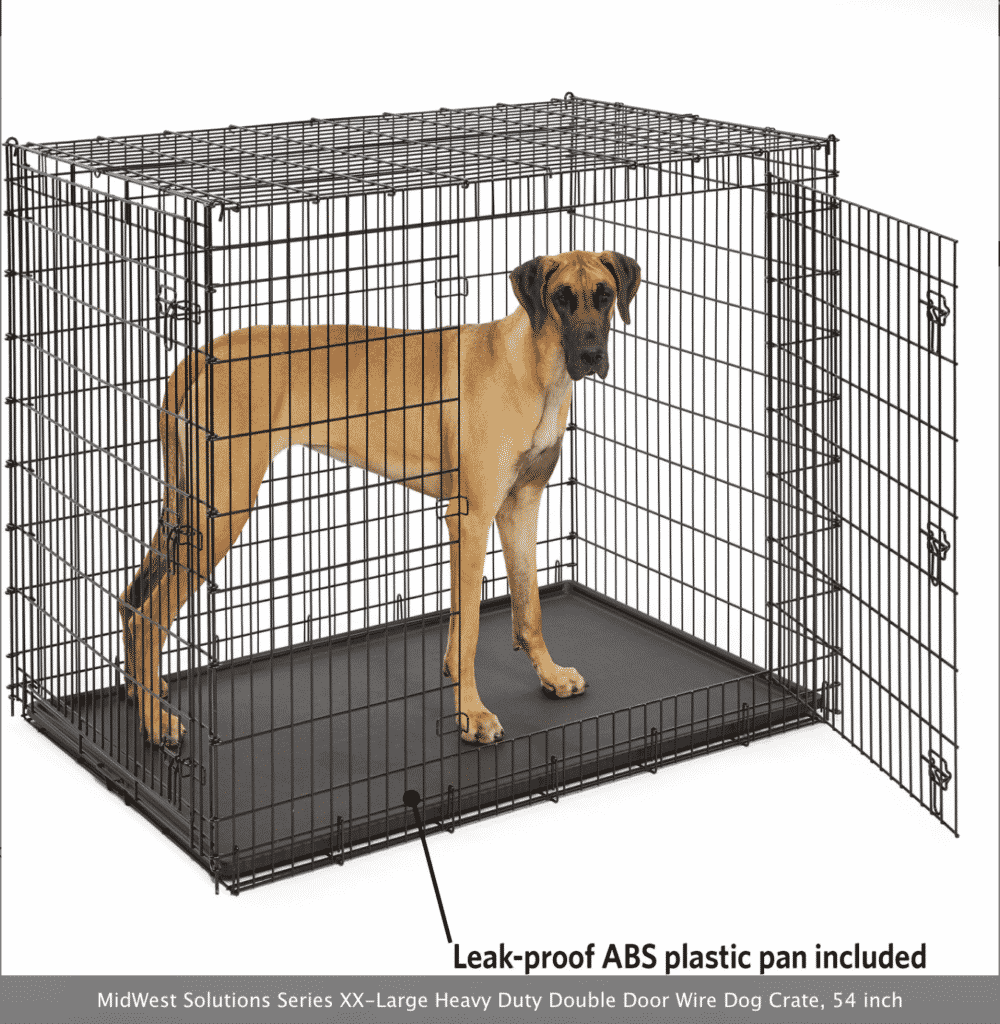
How to crate train a Great Dane: click here
GREAT DANES SHOULD BE RESPECTED BY KIDS AND VICE VERSA
Just like a Great Dane should always respect kids, you should teach any children interacting with your Great Dane to respect your Great Dane!
This means not being too loud or overwhelming with their energy around your dog, as well as not pulling on ears or tails, and always asking an adult before giving your dog a hug or a kiss. If kids learn to treat your Dane with respect, your Great Dane will love them just as much as they love any other family member!
HIRING A DOG TRAINER
Just like other breeds, the Great Dane needs training to become a well rounded dog. But because of their size, it’s important to start training early on and be consistent with it throughout their life. A dog trainer can help you with specific commands, as well as socialization and crate training.
As with any breed of dog, there are always going to be exceptions to the rule. So, even if a Great Dane comes from a long line of dogs who have been great with kids, there’s no guarantee that your dog will be the same way. That’s why it’s important to always supervise your pup around children—no matter what breed they are.
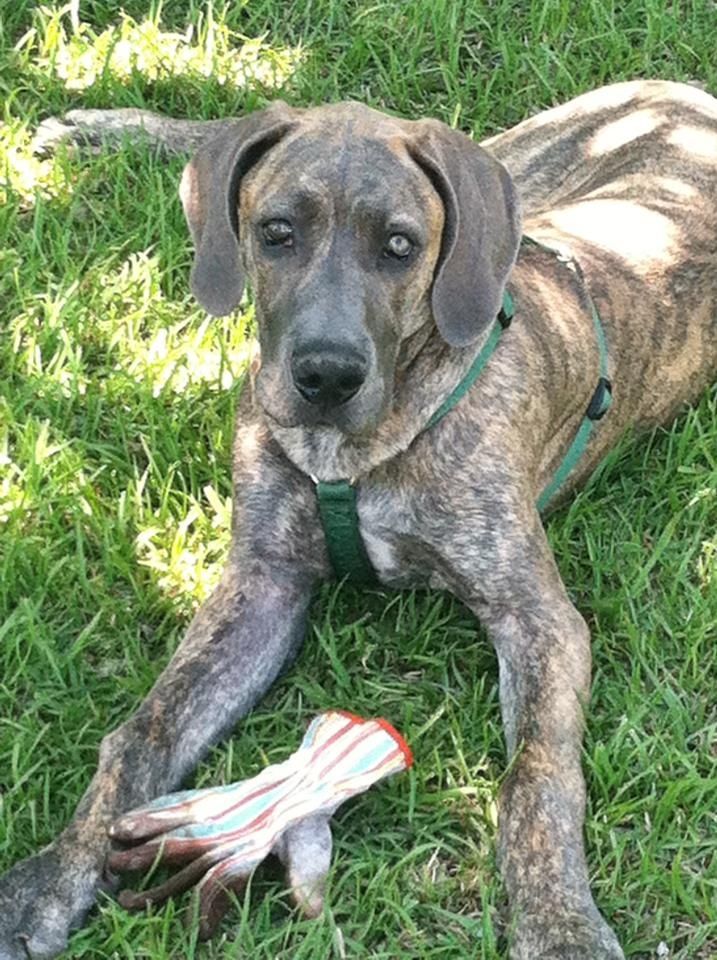
HOW TO FIND A GREAT DANE TRAINERHow to Find and Choose the Best Dog Trainer for Your Great Dane
WHERE WERE GREAT DANE DOGS ORIGINALLY BRED AND WHAT WERE THEY BRED FOR?
Great Danes were originally bred in Germany during the Middle Ages. They were bred by German breeders to be breeding dogs and hunting dogs, and their large size was perfect for taking down large prey. Luckily for them, they were strong and fast: the perfect boar hounds. However, over time they became more popular as family pets and their hunting days were behind them.
Back then, they were also known as a German Mastiff and used to hung wild boar. Now they are not only no longer a German dog, but also no longer a hunting dog either.
Can you imagine your Great Dane hunting boars?
ARE GREAT DANES ACTIVE?
Although big dogs do not need vigorous exercise, they do need to be active and exercised!
Some people can exercise their Great Dane in a space like a fenced yard, while others need more room to get their dog’s energy out.
Some Great Danes participate in dog sports with the American Kennel Club, and other pets just like running zoomies with their buds.
No matter if you’re taking your Great Dane to participate in dog sports or to the dog park, just make sure they’re getting the exercise they need!
WHAT ITEMS ARE NECESSARY FOR A GENTLE GIANT TO BE SUCCESSFUL AS A FAMILY PET?
Great Danes require special items for their size, health, and lifestyle.
Some items that they need include:
- Unique diet / food
- Bones / treats
- Toys
- Bed
- Crate
- Leash / Collar
- Training
DIET / FOOD
Great Danes require a very individualistic diet to cater to their large size and high metabolism.
Owning a Great Dane is not the same as owning smaller dogs. Do your research on the food requirements of a Great Dane.
BONES / TREATS
Since a giant breed is much larger than other pets, you will need to look into larger bones and treats to avoid health hazards.
Look for bones that are big enough for your Dane to enjoy, but not so big that they pose a choking hazard.

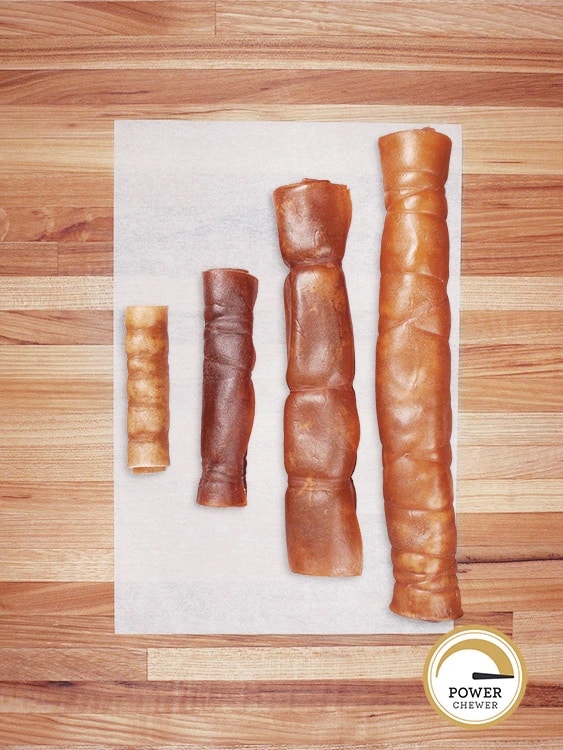
TOYS
With big mouths comes big, strong jaws. Invest in some toys that you may not be able to find at your local pet store, but will hold up for longer and suit your big dog better.
BED
Since big dogs are prone to joint disease, a bed is one of the items that they need the most.
We recommend the Big Barker bed due to its orthopedic design and foam material.
CRATE
Using a crate can be used for small dogs AND big dogs! A crate not only keeps your dog safe, but allows them to have their own space as well.
LEASH / COLLAR
Finding a leash and collar that works for you is going to be the difference between a successful, peaceful walk and one that may be unsettling.
We have lots of recommendations!
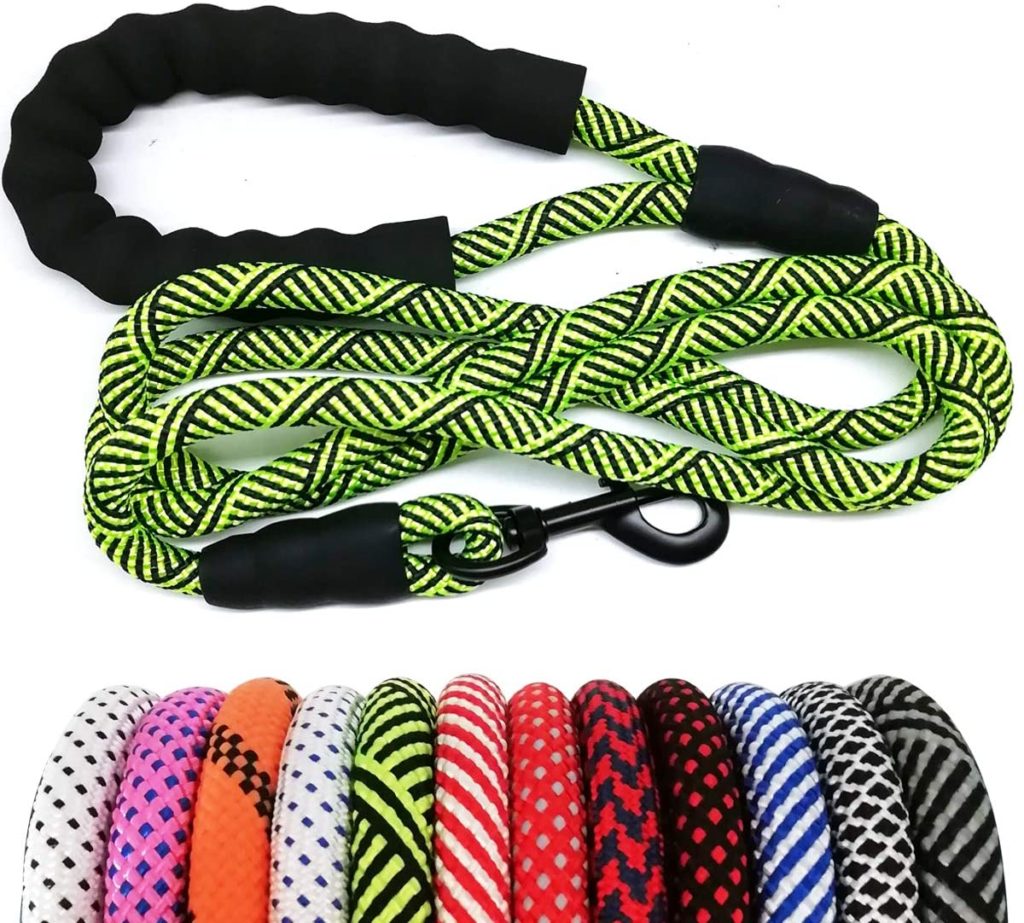
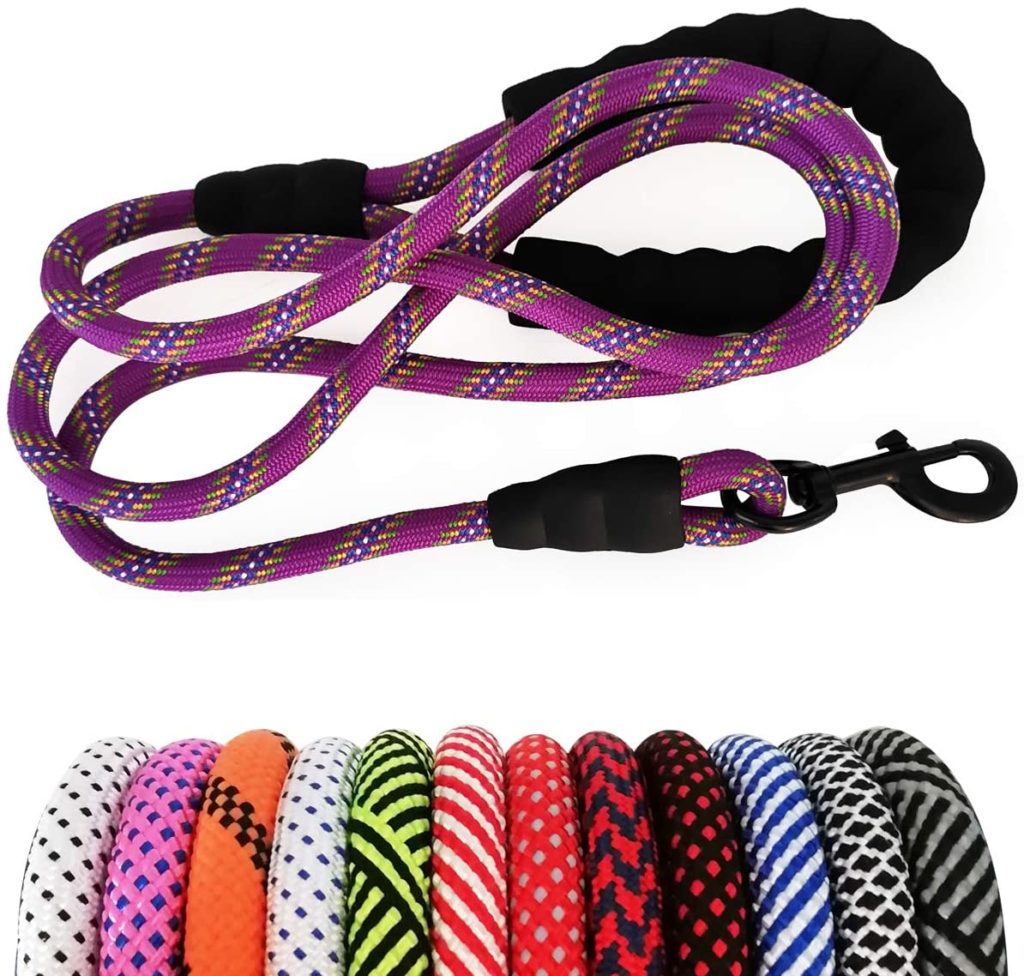
TRAINING
Training your Great Dane is the most important thing you can do! Invest in a dog trainer to help you with socialization, obedience, and crate training.
Great Dane personality traits can be difficult to handle if you’re not prepared, but with the proper training, your Great Dane will be a perfect family pet!
DO GREAT DANES REQUIRE A LOT OF MANAGEMENT, TRAINING, AND WORK?
Great Danes require a unique set of skills, knowledge and handling skills.
Unlike other dogs, the Great Dane is often more like raising a horse inside your house than a dog!
Their needs are different, their diet is different, their joints are different and therefore their exercise needs are different.
You’ll need to be prepared to invest a lot of time into management, training and work with your Great Dane, but it will be worth it when you see the amazing bond you form with your pup!

